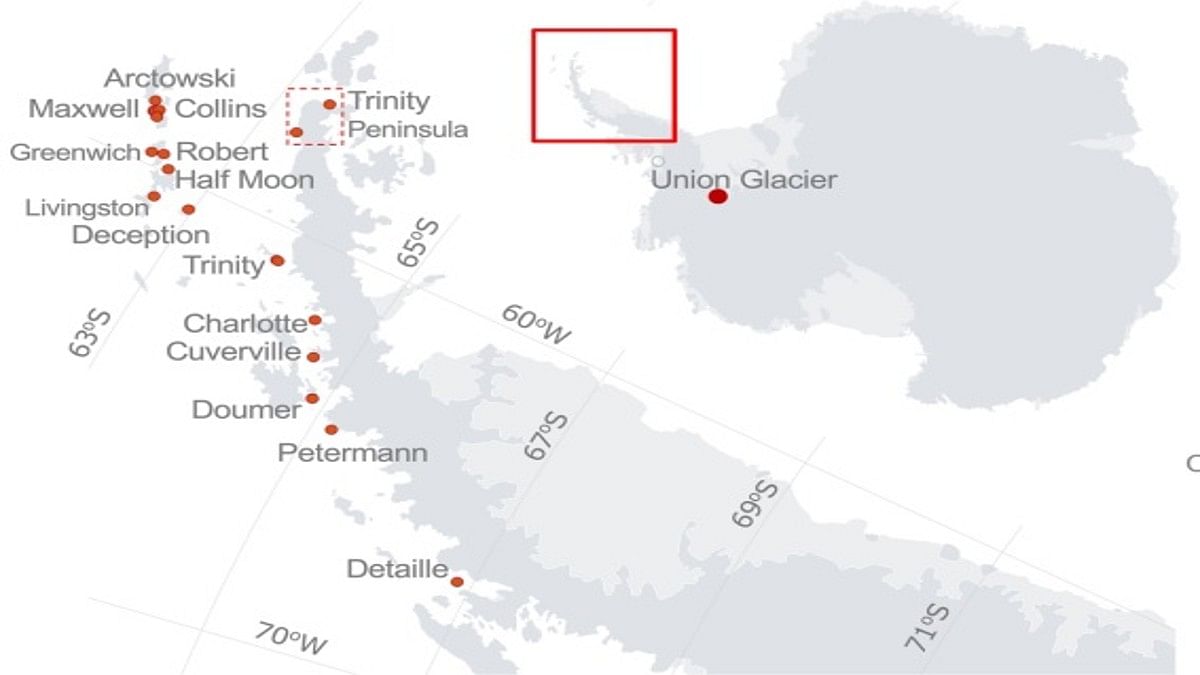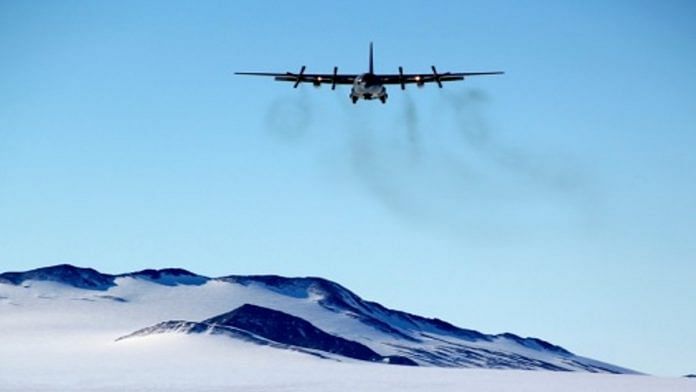Bengaluru: Black carbon or soot pollution from increased human activity at Antarctica’s tourist landing sites and research facilities is accelerating the melting of snow on the continent, an international collaborative study has found.
This is a concern because Antarctica — the world’s southernmost continent and home to the South Pole — acts as a giant umbrella for the earth, and loss of Antarctic ice accelerates global heating.
The study was published this week in Nature Communications, a peer-reviewed scientific journal that has editorial offices in London, Berlin, New York, and Shanghai. Samples for the study were collected over four consecutive summer seasons between 2016 and 2020.
The authors — scientists who hail from Australia, Chile, Germany, Japan, Switzerland, the Netherlands, USA, and Venezuela — advocate for mitigation of black carbon accumulation by using cleaner energy, electric and hybrid ships, and limiting tourism.
The study was published weeks after Marilyn Raphael, a climate scientist from the University of California, Los Angeles, had said that data indicated Antarctic sea ice level could reach a record low in 2022.
Also Read: How’s climate change impacting cities, urban areas? World panel IPCC to study in new report
Albedo and Antarctica
Albedo is the property of any substance to reflect sunlight. On earth, the cloud cover and ice cover act as sources increasing Earth’s albedo.
Antarctica’s main sources of warming are currently the warmer waters underneath melting ice shelves, and warming surface air temperatures. These two processes melt the ice on the continent from above and below. Increased soot accumulation would aid in absorption of sunlight and further surface melting.
As more ice melts, in the future, it will expose more land. On the shores, it exposes more of the water. Both surfaces are darker than ice, hence absorbing more heat and accelerating warming further as more ice melts.
‘1 visitor may contribute to 83,000 kg snow melting’
Black carbon deposits, as the name suggests, darken snow, leading to more absorption of solar radiation and faster melting. They are produced by the burning of fossil fuel and biomass.
Local sources for black carbon include all kinds of transportation vessels, watercraft, airplanes, helicopters, trucks, all-terrain vehicles, tourist cruises, diesel power plants, and generators.
According to the study, most black carbon deposits are found in snow around research facilities and tourist-landing sites.
The authors estimate that an annual average of 53,000 tourists visited Antarctica during the tourist seasons between 2016 and 2020, and the amount of black carbon attributable to each individual visitor might contribute to nearly 83,000 kg of snow melting each summer.
What the study found
The authors measured black carbon concentrations in snow samples from 28 sites in a section of 2,000 km land with human activity in Antarctica. Samples were also collected from interior sites away from human activity for comparison.

Black carbon levels at measured sites were two to four times higher than the rest of the continent, the study found.
The data showed that black carbon content in snow was significantly higher than background levels in snow that surrounds research facilities and the popular shore landing sites for tourists. A total of 155 samples of snow were collected between 2016 and 2020.
The results suggest that black carbon could cause ice above the ground on Antarctica to melt at the rate of 23 millimetres every summer in impacted areas.
According to the study, there are 76 research stations in Antarctica in active use, housing approximately 5,500 people every summer. Despite the pandemic, nearly 74,000 tourists visited Antarctica in 2019-20 — a 32 per cent increase compared to 2018-19, and over twice the number from a decade ago.
The study found that the carbon footprint of researchers was up to a magnitude higher than that of tourists. The highest levels of soot were measured near the Argentine research station in Hope Bay on the Trinity Peninsula.
(Edited by Gitanjali Das)
Also Read: What do sponges feed on in nutrient-poor Arctic? European study answers long-held mystery




